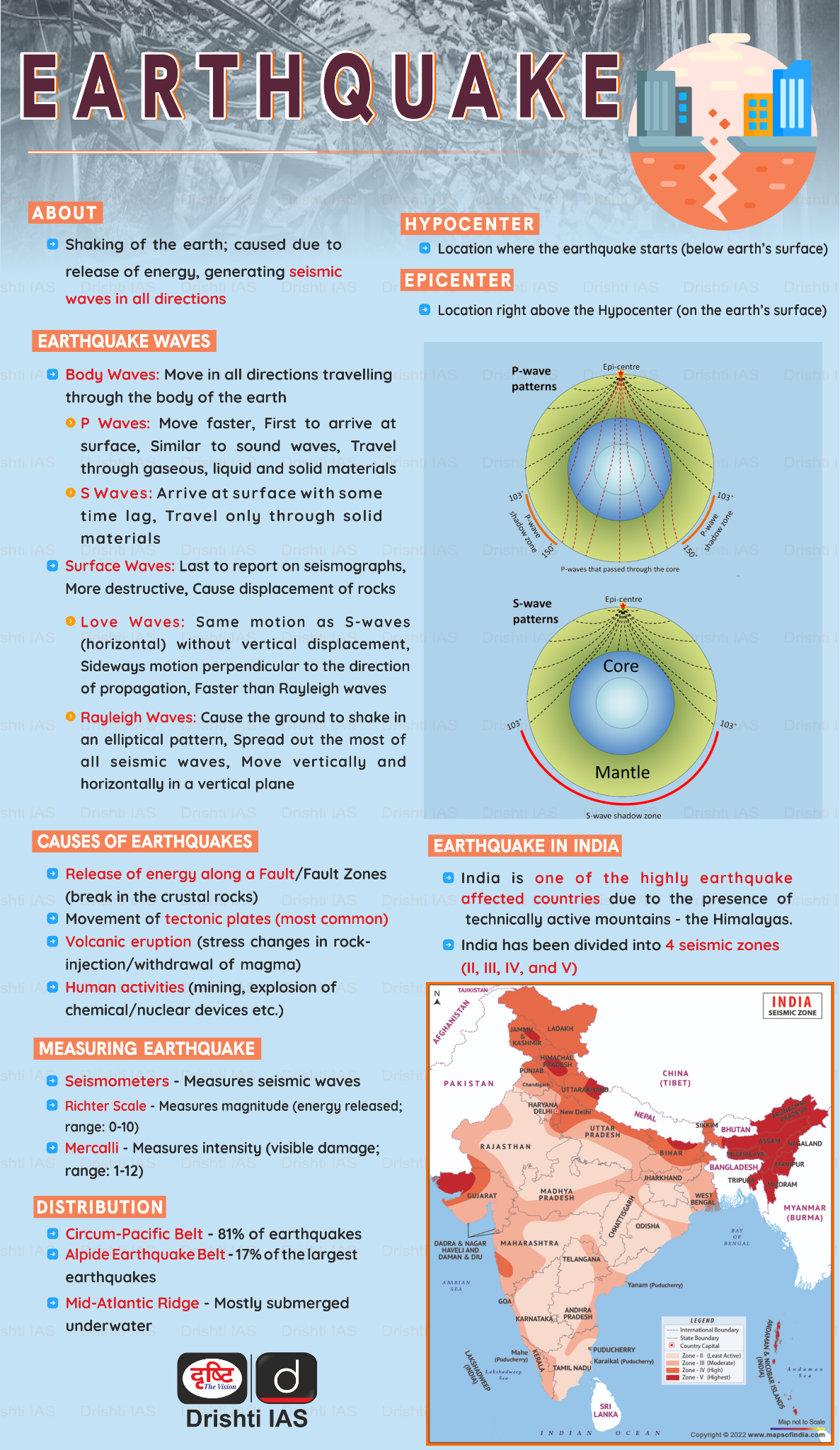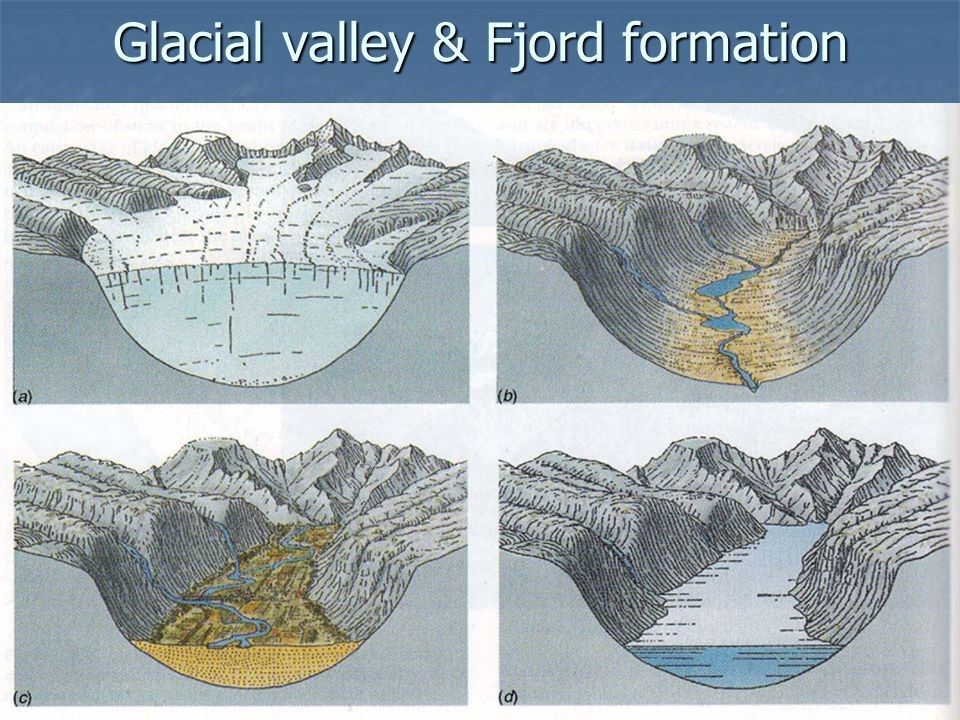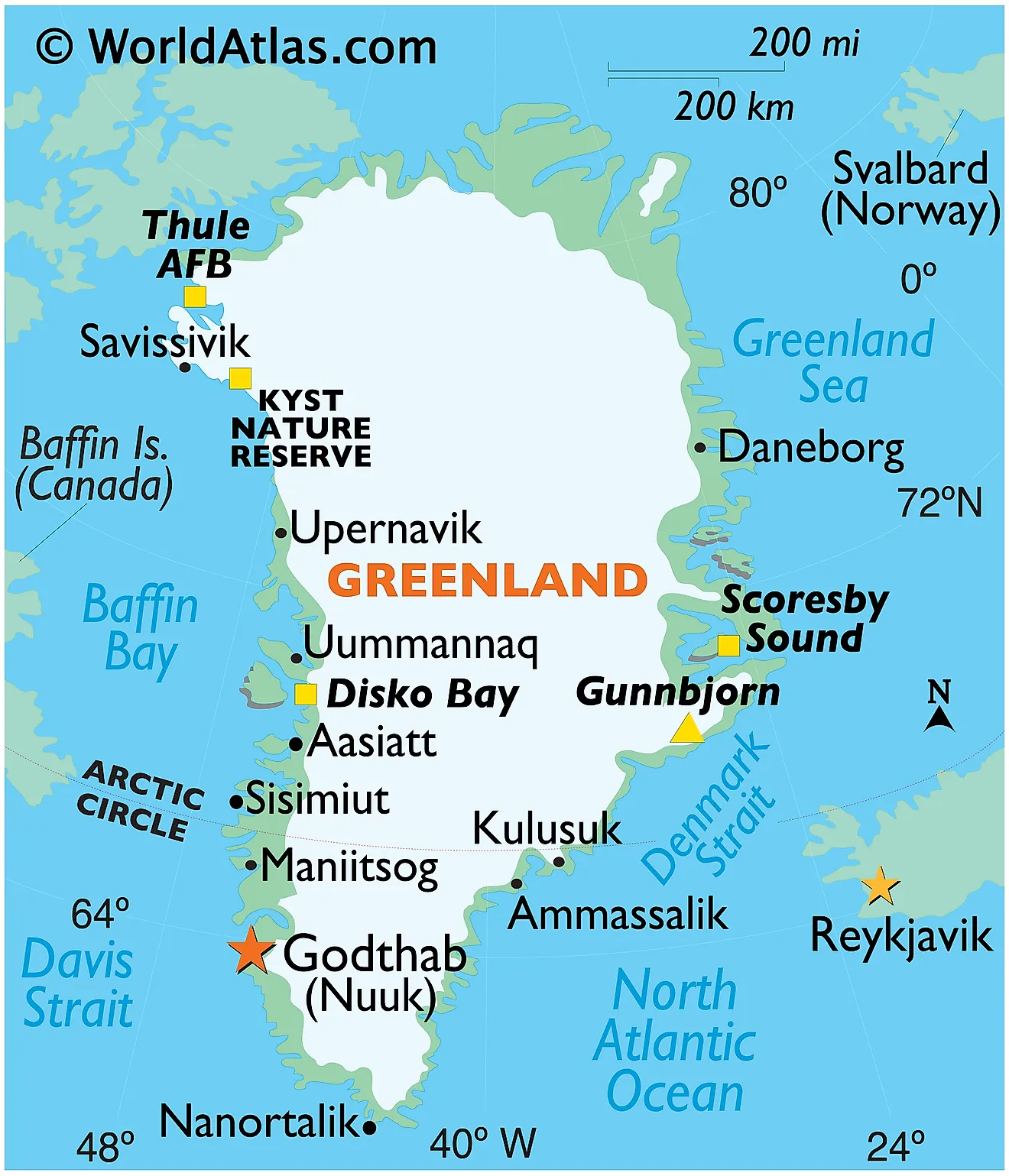Landslide Induced Earthquake in Greenland | 26 Sep 2024
Why in News?
Recently, scientists detected unusual seismic waves around the world caused due to landslides in Greenland that lasted nine days.
- Unlike typical earthquake signals (P and S waves), these waves exhibited a single frequency, suggesting a non-seismic origin.
- Seismologists initially labelled the phenomenon as a “USO” (Unidentified Seismic Object) due to its mysterious nature.
What are the Key Facts About this Landslide-Induced Earthquake?
- Origin: By analysing seismic data, satellite images, water level monitors, and simulations, scientists discovered that a large landslide in Dickson Fjord, Greenland, triggered the event.
- The collapse of Hvide Stovhorn peak led to a rock-ice avalanche, triggering a submarine landslide.
- Seiche Effect in the Fjord: In the confined fjord, waves bounce between its walls, creating a phenomenon known as a “seiche.”
- This back-and-forth sloshing persisted for over nine days, with waves oscillating every 90 seconds.
- Tsunami: The earthquake gave rise to a 200-metre-high mega-tsunami at an isolated place in the Arctic Ocean region. It didn’t kill anyone but it damaged an unstaffed research facility on the island of Ella.
- Global Reverberations: The seiche waves sent seismic signals across the globe causing Earth’s surface to vibrate.
- This prolonged reverberation was detected on seismometers from the Arctic to Antarctica.
- Link to Climate Change: The landslide occurred because the glacier at the fjord's foot melted and retreated due to global warming, leaving the rocky slope unsupported and causing it to collapse.
- It underscores the impact of climate change in polar regions, where warming accelerates ice melt, destabilising landscapes.
What are Fjords?
- About: Fjords are elongated, deep, narrow steep-sided inlets of the sea that extend far inland and are formed due to the inundation of a glaciated valley.
- Fjords are found in mountainous areas of both the Northern and Southern Hemispheres, particularly in the higher latitudes (up to about 80O).
- Formation of Fjords: Fjords were formed during the last Ice Age by glaciers. As glaciers moved slowly, they carved out deep valleys, leading to the creation of fjords.
- Fjords are deepest inland because the glacier's force was strongest there during glaciation.
- Geographic Distribution of Fjords: Fjords are primarily found in Norway, Chile, New Zealand, Canada, Greenland, and Alaska.
- Coral Reefs in Fjords: Some fjords, particularly in Norway, host deep cold-water coral reefs, which support various marine species like fish, plankton, and sea anemones.
- These cold-water reefs thrive in complete darkness and under extreme pressure, unlike their tropical counterparts.
- Skerries (Rocky Islands): Skerries are small rocky islands found around fjords, formed by glaciation. They are common along the Scandinavian coastline.
- Fjords as Calm Harbours: Despite the rocky islands or skerries that can make navigation difficult, fjords are generally calm and protected. This makes them ideal harbours for ships due to their tranquil waters.
Greenland
- Largest Island: Greenland is recognised as the world’s largest island and functions as an autonomous Denmark territory.
- Geographically, it is a part of the North American continent.
- Climate: Greenland experiences perpetual daylight for two months each year due to its high latitude.
- Strategic Importance: The United States established a radar base at Thule at the start of the Cold War.
UPSC Civil Services Examination, Previous Year Question (PYQ)
Prelims
Q. With reference to the water on the planet Earth, consider the following statements: (2021)
- The amount of water in the rivers and lakes is more than the amount of groundwater.
- The amount of water in polar ice caps and glaciers is more than the amount of groundwater.
Which of the statements given above is/are correct?
(a) 1 only
(b) 2 only
(c) Both 1 and 2
(d) Neither 1 nor 2
Ans: (b)
Q.Which of the following phenomena might have influenced the evolution of organisms? (2014)
- Continental drift
- Glacial cycles
Select the correct answer using the code given below:
(a) 1 only
(b) 2 only
(c) Both 1 and 2
(d) Neither 1 nor 2
Ans: (c)



